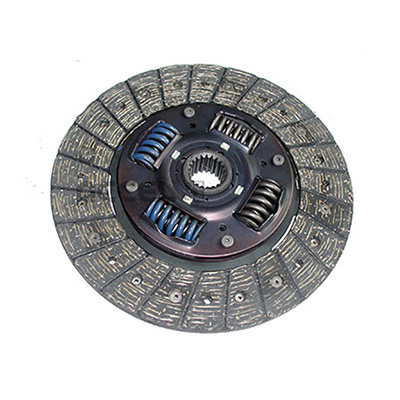- Arabic
- French
- Russian
- Spanish
- Portuguese
- Turkish
- Armenian
- English
- Albanian
- Amharic
- Azerbaijani
- Basque
- Belarusian
- Bengali
- Bosnian
- Bulgarian
- Catalan
- Cebuano
- Corsican
- Croatian
- Czech
- Danish
- Dutch
- Afrikaans
- Esperanto
- Estonian
- Finnish
- Frisian
- Galician
- Georgian
- German
- Greek
- Gujarati
- Haitian Creole
- hausa
- hawaiian
- Hebrew
- Hindi
- Miao
- Hungarian
- Icelandic
- igbo
- Indonesian
- irish
- Italian
- Japanese
- Javanese
- Kannada
- kazakh
- Khmer
- Rwandese
- Korean
- Kurdish
- Kyrgyz
- Lao
- Latin
- Latvian
- Lithuanian
- Luxembourgish
- Macedonian
- Malgashi
- Malay
- Malayalam
- Maltese
- Maori
- Marathi
- Mongolian
- Myanmar
- Nepali
- Norwegian
- Norwegian
- Occitan
- Pashto
- Persian
- Polish
- Punjabi
- Romanian
- Samoan
- Scottish Gaelic
- Serbian
- Sesotho
- Shona
- Sindhi
- Sinhala
- Slovak
- Slovenian
- Somali
- Sundanese
- Swahili
- Swedish
- Tagalog
- Tajik
- Tamil
- Tatar
- Telugu
- Thai
- Turkmen
- Ukrainian
- Urdu
- Uighur
- Uzbek
- Vietnamese
- Welsh
- Bantu
- Yiddish
- Yoruba
- Zulu
Sep . 26, 2024 07:12 Back to list
synchronous belt
Understanding Synchronous Belts A Comprehensive Guide
Synchronous belts, also known as timing belts, are essential components in various mechanical systems, enabling precise and efficient power transmission. They are commonly used in automotive engines, industrial machinery, and robotics, primarily due to their ability to synchronize the rotation of shafts and maintain timing between different machine parts. This article delves into the characteristics, benefits, applications, and maintenance of synchronous belts, while providing insightful information for both engineers and enthusiasts.
Characteristics of Synchronous Belts
Synchronous belts are distinguishable from traditional V-belts by their toothed design, which fits onto corresponding sprockets or pulleys. This unique feature allows for a positive engagement between the belt and the driving components, minimizing slippage and ensuring that the rotational speed remains consistent. Typically made from reinforced rubber compounds, synchronous belts often incorporate fiber materials, such as nylon or polyester, providing added strength and durability.
The teeth of synchronous belts are designed in such a way that they fit into the grooves of the pulleys. This design allows for a larger surface area contact, which improves grip and reduces wear. Additionally, these belts come in various shapes and sizes, including timing belt profiles like metric trapezoidal or imperial curvilinear, catering to different application requirements.
Benefits of Synchronous Belts
One of the primary advantages of synchronous belts is their ability to maintain a high level of accuracy. Unlike traditional belts, which can experience slippage, synchronous belts ensure that the drive and driven components move in sync. This precise timing is crucial in applications such as automotive engines, where the synchronization of the crankshaft and camshaft is vital for optimal performance.
Another key benefit is their maintenance-free nature. Synchronous belts do not require tension adjustments that are common with other belt types. Once properly installed, they can perform efficiently for extended periods, significantly reducing the frequency of maintenance interventions. Furthermore, their design allows for quiet operation, improving the overall user experience in automotive and industrial settings.
Synchronous belts are also energy efficient. They can transmit higher loads at reduced energy consumption levels, making them a practical choice for electric motors and high-performance machinery. Their lightweight construction means less inertia, promoting quicker acceleration and deceleration, which is crucial in applications that require rapid response times.
synchronous belt

Applications in Various Industries
The versatility of synchronous belts allows them to be employed in numerous industries. In the automotive sector, they are vital for camshaft and crankshaft synchronization, driving water pumps, and operating other engine accessories. Synchronous belts are also used in timing systems of various vehicle types, including motorcycles, bicycles, and hybrid vehicles.
In the manufacturing industry, synchronous belts play a crucial role in automation systems. They are used in conveyor systems, robotic arms, and CNC (Computer Numerical Control) machines, where precision motion is paramount. The ability to maintain synchronization over long distances makes them ideal for complex manufacturing processes.
Moreover, the aerospace and medical sectors rely on the reliability and accuracy of synchronous belts for various applications. In the aerospace industry, they are used in control systems and engine mechanisms. In medical devices, synchronous belts facilitate precise movements in imaging equipment and surgical robots.
Maintenance and Lifespan
While synchronous belts are known for their durability, periodic inspections are essential for ensuring optimal performance. Checking for signs of wear, such as frayed teeth or misalignment, can help prevent unexpected failures. It's also crucial to ensure that the belt operates within the manufacturer-recommended tension settings to avoid premature wear.
The lifespan of a synchronous belt depends on various factors, including the operating conditions, load, and frequency of use. Typically, these belts can last several years, but it’s advisable to replace them according to the manufacturer’s recommendations or when signs of significant wear are evident.
Conclusion
Synchronous belts are vital components in a wide array of mechanical applications, known for their precision, efficiency, and maintenance-free operation. Their unique design allows for reliable power transmission and synchronization, making them indispensable in industries ranging from automotive to aerospace. By understanding their characteristics, benefits, and maintenance, users can ensure optimal performance and longevity of these essential components. As technology continues to evolve, synchronous belts will undoubtedly remain at the forefront of mechanical engineering innovation.
-
Korean Auto Parts Timing Belt 24312-37500 For Hyundai/Kia
NewsMar.07,2025
-
7PK2300 90916-T2024 RIBBED BELT POLY V BELT PK BELT
NewsMar.07,2025
-
Chinese Auto Belt Factory 310-2M-22 For BMW/Mercedes-Benz
NewsMar.07,2025
-
Chinese Auto Belt Factory 310-2M-22 For BMW/Mercedes-Benz
NewsMar.07,2025
-
90916-02660 PK Belt 6PK1680 For Toyota
NewsMar.07,2025
-
drive belt serpentine belt
NewsMar.07,2025

